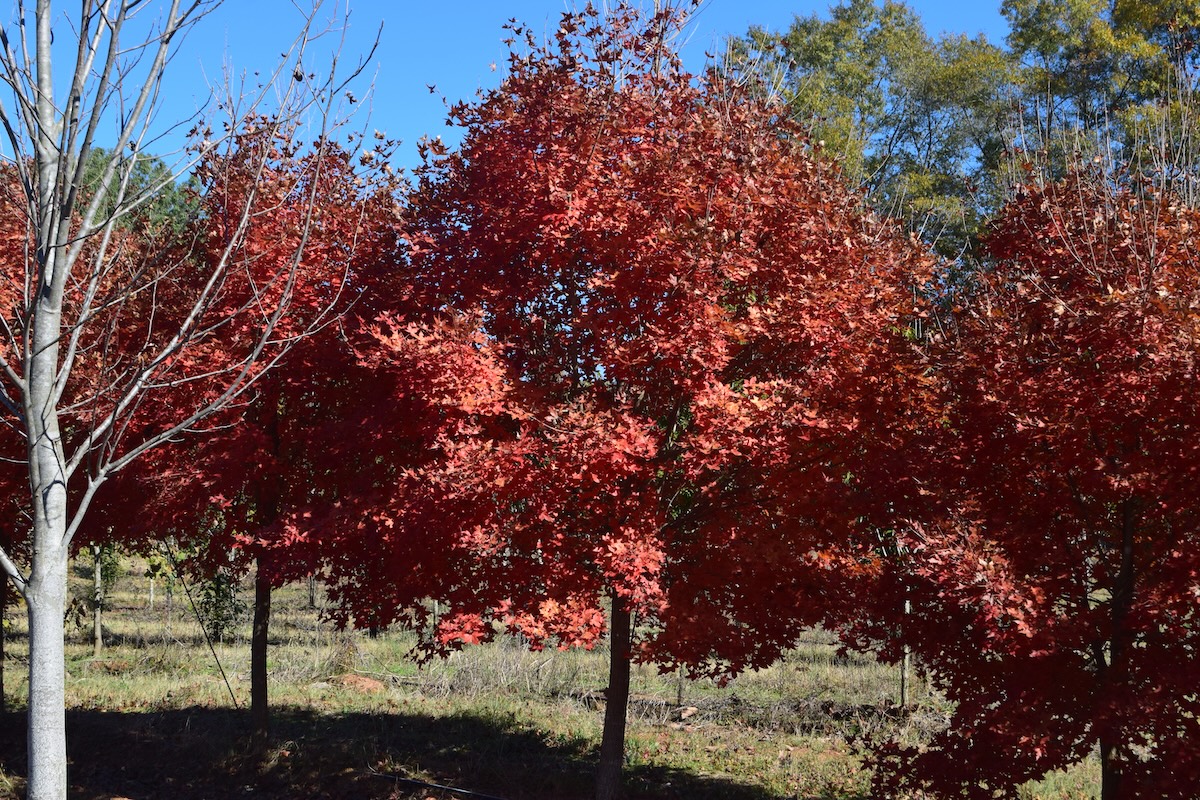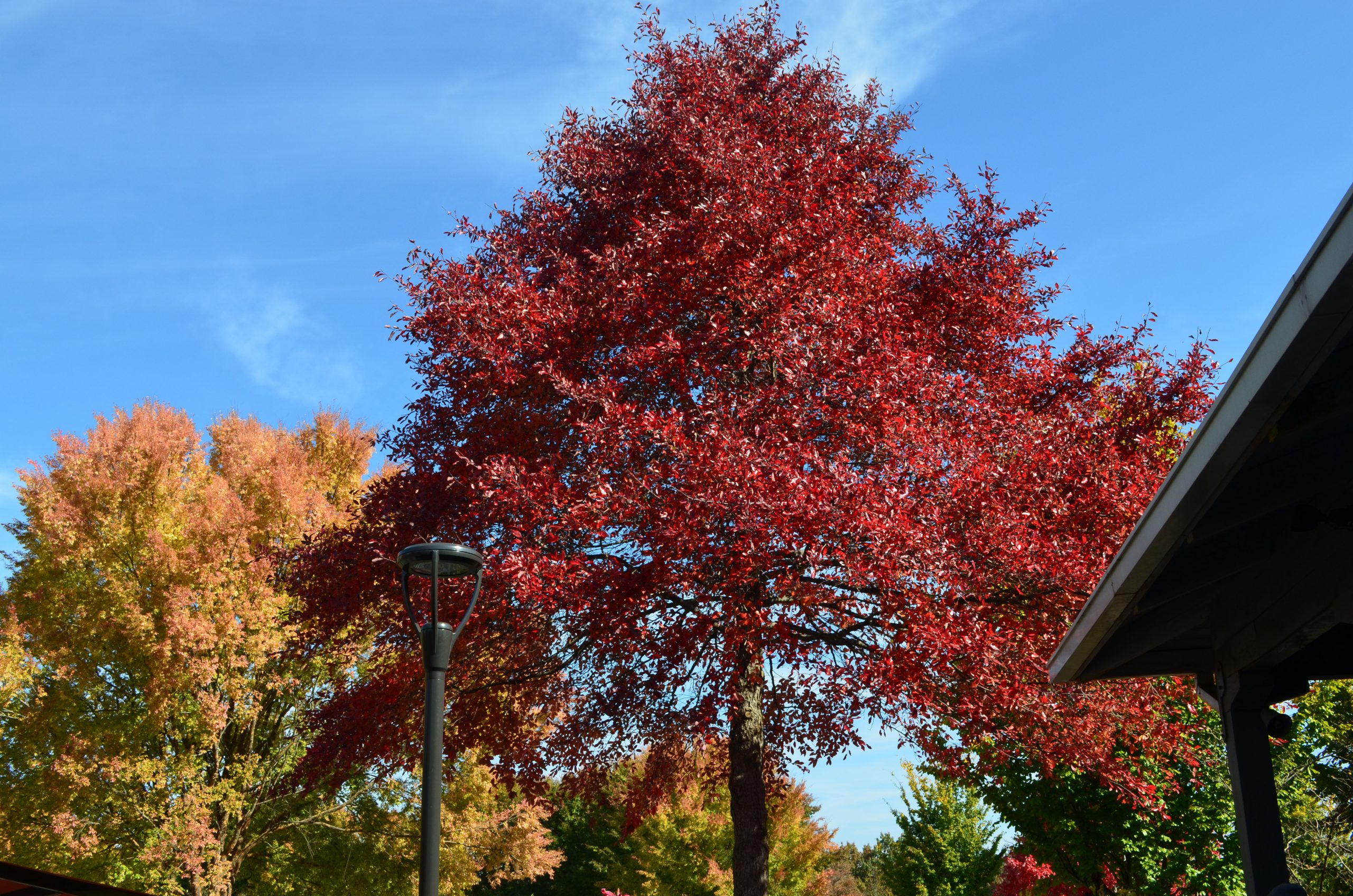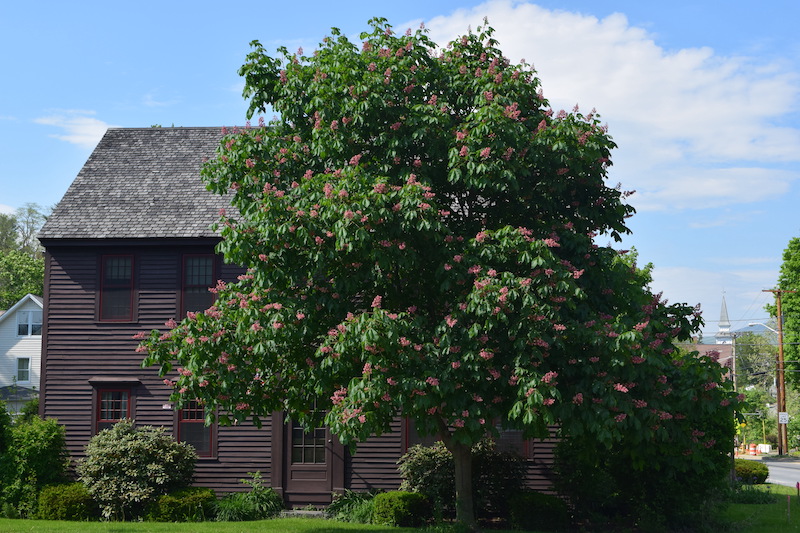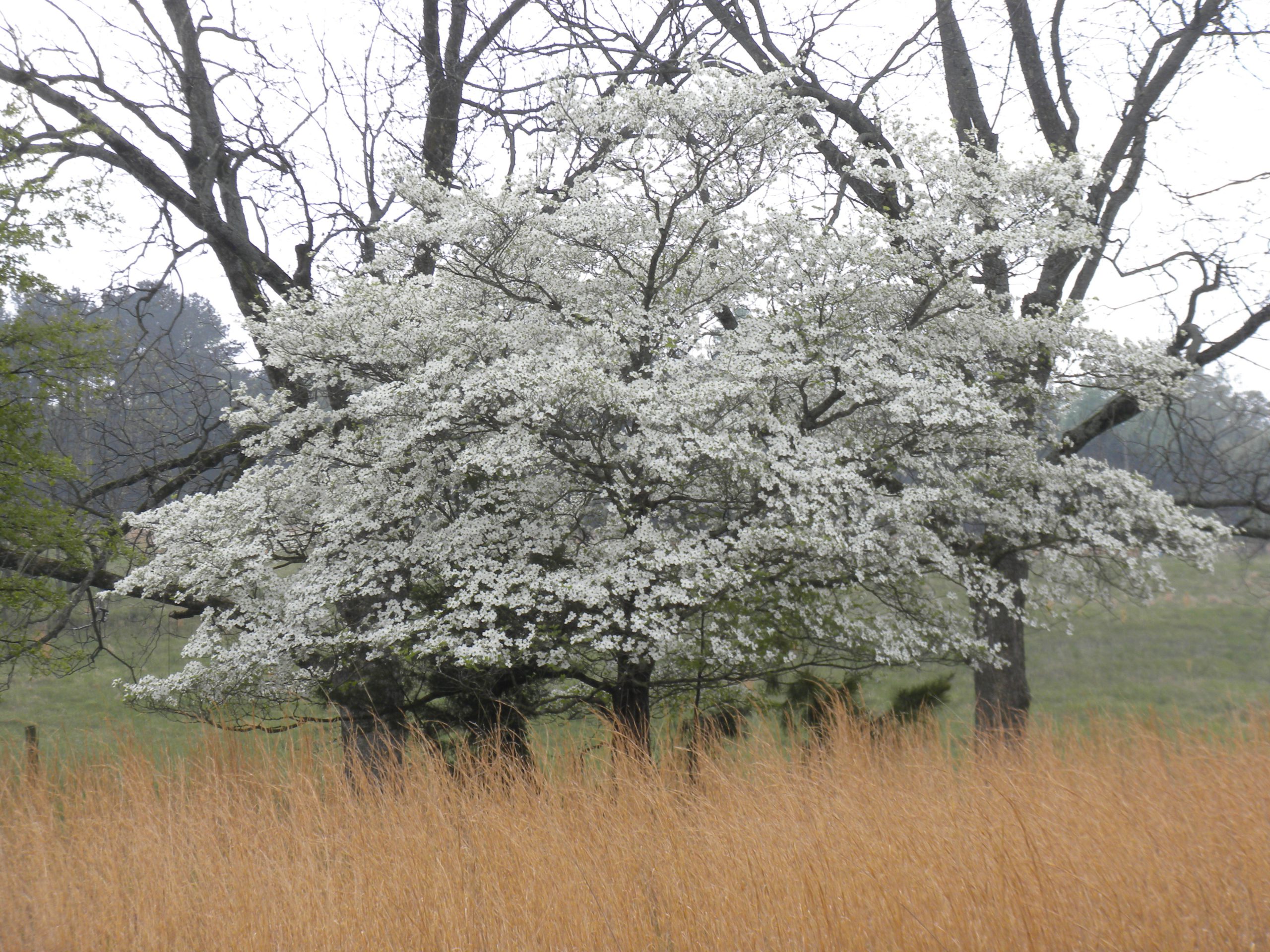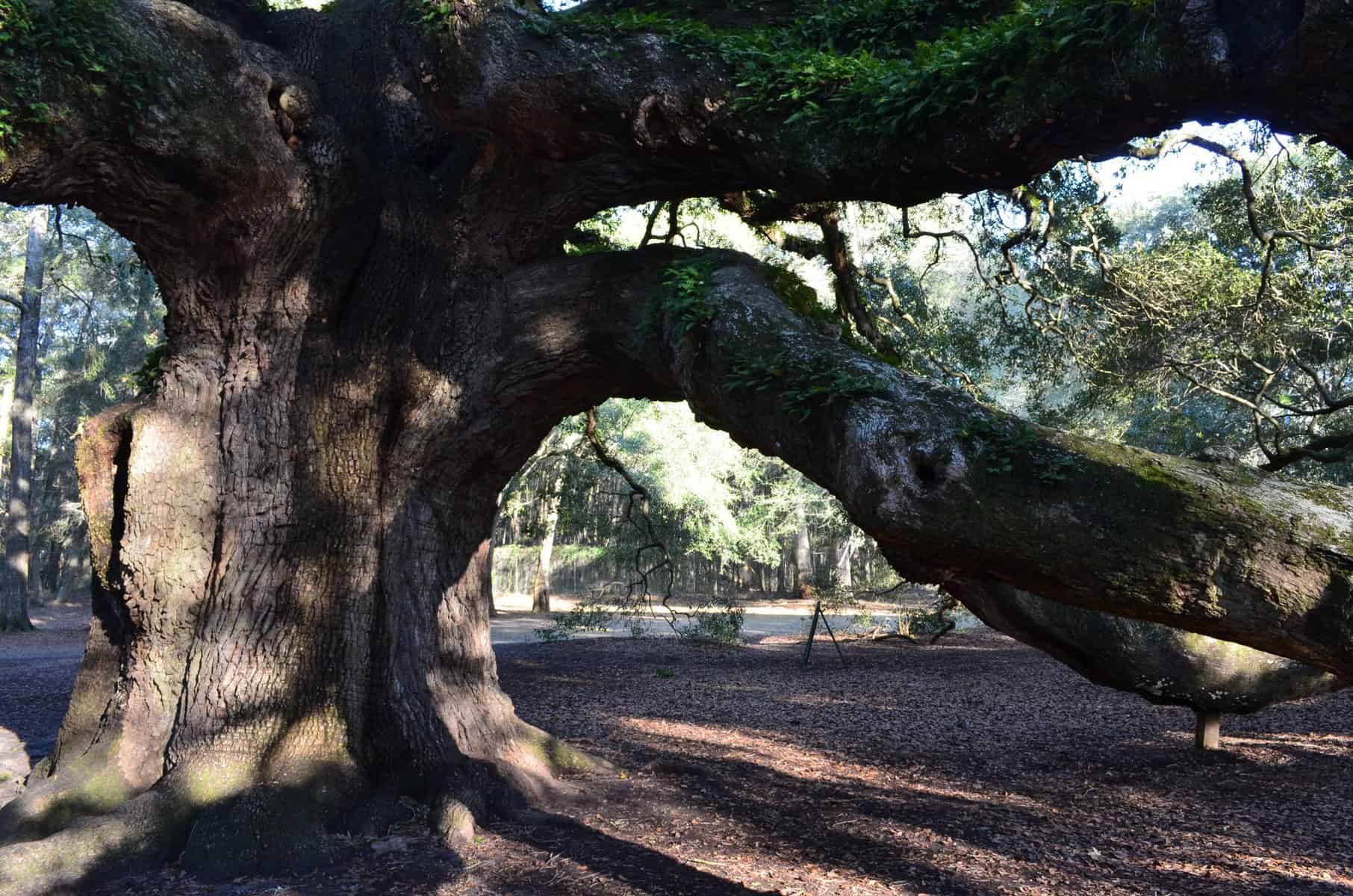
The overcup oak, Quercus lyrata, languished in landscape obscurity until the 1990s when several Georgia nurserymen realized and developed its potential. The University of Georgia campus is rich with Q. lyrata, no two alike, so the thinking went can the species be clonally/vegetatively propagated. Mike Glenn, Select Trees, Athens, and John Barbour, Bold Spring Nursery, Hawkinsville, succeeded rooting selections with desirable traits. The process is not easy and requires attention to detail with success seldom over 50%. Patience was the key to developing the best protocol.
The species is quite amazing being well-adapted to wet (really wet) and dry soils (really dry) and, in the wild, occurs along rivers, streams, bottomlands and flood plains. In Washington, Georgia, I observed massive old trees under four feet of water (see photo). Growers reported the species is easy to transplant and a worthy alternative to white oak, Q. alba, an inherently more difficult to transplant species. On the Georgia campus trees grow on dry slopes, in narrow tree lawns and are prospering. (photo)
Overcup oak occurs from New Jersey to Florida, following the rivers in Ohio, Indiana, Illinois, Missouri, to Oklahoma and Texas. The species is adapted from zone 5 to 9 and mature specimens in Cincinnati survived zone 4 temperatures without injury.
The habit is pyramidal-oval in youth, oval-rounded and often broader than high at maturity, all incarnations are represented by trees in the Georgia campus. Branches are generally upswept, bold, uniformly distributed resulting in a clean winter silhouette. Bark exfoliates on young trees; at maturity rich gray-brown, ridged and furrowed. Landscape size ranges from 40 to 60’ high and wide, the National Champion 128’ by 81’ in Isle of Wight, Virginia.
Foliage, bronze-green when unfolding, matures lustrous dark green, turning yellow-brown to tannin brown in autumn. Several cultivars were selected for orange-red fall coloration. Leaves are 6 to 8” long, with 3 to 5 (9) pairs of obtuse lobes. Most trees drop their leaves cleanly in fall, while white oak retains a measure of leaves into winter. The species is late to leaf in spring, often bare until late April-early May in zone 8. Green Spring™ (‘Dahlonega’) foliage emerges several weeks earlier than most overcups.
The common name derives from the ¾ to 1” high and wide nut covered about ¾’s by the cap. Acorn crops are often abundant and can be a maintenance nuisance. I collect nuts when mature, sow, with the root radicle germinating immediately; the shoot the following spring. The species is fast growing the seedlings reach 4 to 6’ high in one season.
The following cultivars offer improved foliage, uniform habit, and most are on their own roots, thus no opportunity for graft incompatibility.
- Columnar clone (‘Milliken’) is a unique fastigiate-columnar selection. A grafted 3-gallon tree, planted in the Dirr garden in 2013, was 30’ high, 6 to 8’ wide in 2019. See photo.
- Green Spring™ (‘Dahlonega’) was previously mentioned. 50’ by 45’
- Highbeam™ (QLFTP’) offers uniform habit with upswept branches and yellow-orange-red fall color. 55’ by 45’.
- Marquee™ (‘Hopeulikit’) develops pyramidal habit with upswept branches. Foliage is lustrous dark green. Prettiest foliage I have observed on an overcup. 55’ by 45’.
- Redstone™ (‘Howler’) is upright branching developing a uniform oval habit. Glossy dark green leaves turn dark red to purple-red in fall. 55’ by 45’.
- Streamline (‘QLR552’) is upright-oval with uniform leaf drop. 50’ by 30’.

